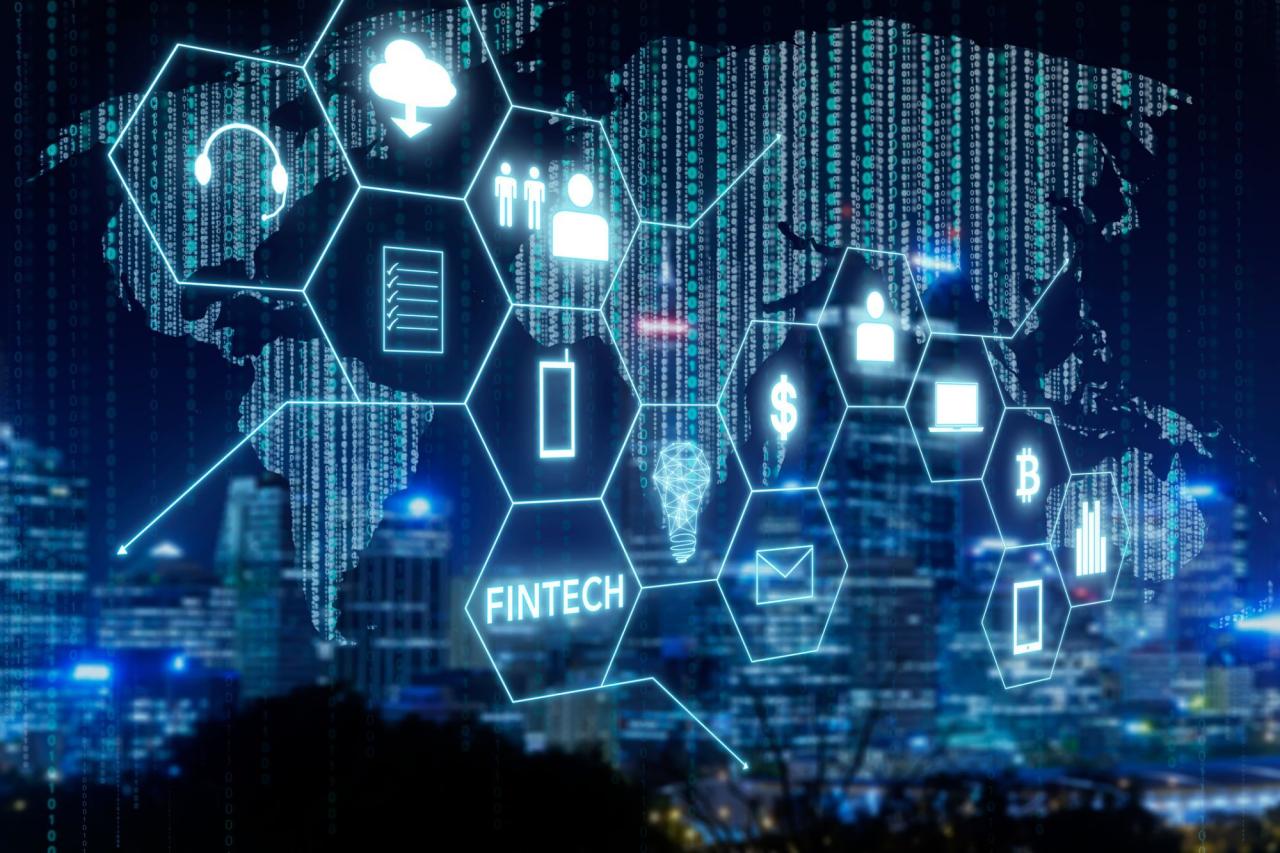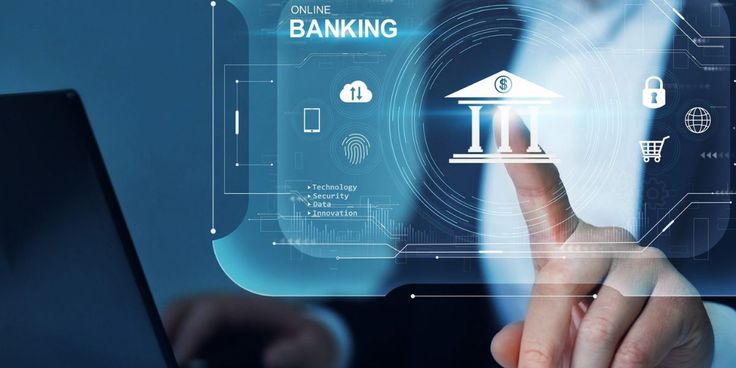The global financial landscape is undergoing a monumental shift, propelled by the relentless force of technological innovation. Traditional banking, once a staid and monolithic industry, is being profoundly reshaped by Fintech – a dynamic fusion of finance and technology. This isn’t merely about digitalizing existing services; it’s about fundamentally reimagining how financial products are delivered, consumed, and experienced. From mobile payments and peer-to-peer lending to blockchain-powered assets and AI-driven investment advice, Fintech is dismantling old barriers, fostering unprecedented efficiency, increasing accessibility, and challenging established giants. It’s truly transforming banking forever, forging a future that is more inclusive, agile, and user-centric.
The Pre-Fintech Era: A Legacy of Traditional Banking
To fully appreciate the revolutionary impact of Fintech, it’s essential to first understand the characteristics and inherent limitations of traditional banking that dominated the financial world for centuries.
A. The Traditional Banking Model: Slow and Centralized
For much of modern history, banking was characterized by a centralized, branch-based model, often slow to adapt and exclusive to many.
- Branch-Centric Operations: The physical bank branch was the primary point of interaction for customers, requiring them to visit during limited hours for transactions, account opening, or financial advice. This created geographical barriers and consumed significant customer time.
- Manual Processes and Paperwork: A vast amount of banking operations relied on manual processes, paper forms, and physical document storage. This led to high operational costs, susceptibility to human error, and slow transaction processing times.
- Limited Accessibility and Exclusivity: Access to banking services often required a physical presence, significant minimum balances, or extensive credit history, effectively excluding large segments of the population, particularly in developing nations.
- High Fees and Opaque Pricing: Traditional banks often charged a multitude of fees for various services (e.g., ATM withdrawals, wire transfers, overdrafts), and the pricing structures could be opaque, making it difficult for consumers to compare costs effectively.
- Slow Innovation Cycles: Bound by legacy systems, stringent regulations, and a risk-averse culture, traditional banks were historically slow to adopt new technologies or innovate rapidly, resulting in a lack of personalized services or real-time capabilities.
- Fragmented Customer Experience: Customer interactions were often siloed across different departments or channels (e.g., mortgage, checking account, investments), leading to a fragmented and inconsistent customer experience.
B. The Rise of Early Digital Banking: Automation, Not Transformation
The late 20th and early 21st centuries saw the emergence of rudimentary digital banking, which focused on automating existing processes rather than fundamentally redesigning them.
- Online Banking Portals: Banks began offering web portals for basic transactions like balance inquiries, fund transfers, and bill payments. This was a step forward in convenience but largely replicated branch services online without significant new features.
- Automated Teller Machines (ATMs): ATMs provided 24/7 access to cash and basic transactions, reducing the reliance on bank tellers. While transformative for convenience, ATMs were still standalone machines, disconnected from broader digital ecosystems.
- Electronic Fund Transfers (EFTs): Standardized electronic systems like ACH (Automated Clearing House) and SWIFT (Society for Worldwide Interbank Financial Telecommunication) expedited interbank transfers but often still involved delays and high fees for international transactions.
- Limitations of Early Digitalization: These early efforts primarily focused on digitizing the ‘front office’ (customer-facing interactions) while the ‘back office’ (core banking systems, compliance, risk management) often remained steeped in legacy technology and manual intervention. This limited the extent of true transformation.
This foundational context sets the stage for understanding how Fintech’s innovative spirit has become a powerful disruptor, addressing the deep-seated inefficiencies and limitations of the past.
Core Pillars of Fintech Innovation
Fintech’s transformative power stems from its strategic application of cutting-edge technologies to solve financial problems. Several key technological pillars underpin this revolution.
A. Artificial Intelligence and Machine Learning (AI/ML)
AI and ML are at the forefront of Fintech, enabling smarter, more personalized, and more efficient financial services.
- Algorithmic Trading: AI analyzes vast market data to execute trades at optimal times, identify trends, and manage risk in fractions of a second, significantly impacting hedge funds and institutional trading.
- Fraud Detection: ML algorithms can detect complex patterns of fraudulent activity in real time, far exceeding human capabilities, protecting consumers and financial institutions from losses.
- Personalized Financial Advice (Robo-Advisors): AI-powered robo-advisors provide automated, data-driven investment advice, portfolio management, and financial planning, often at a lower cost than traditional human advisors, democratizing access to sophisticated financial guidance.
- Credit Scoring and Lending: AI can analyze a broader range of alternative data (e.g., social media activity, utility payments) to assess creditworthiness, making lending decisions more inclusive and accurate, especially for underserved populations.
- Customer Service (Chatbots/Virtual Assistants): AI-powered chatbots and virtual assistants provide 24/7 customer support, answering queries, guiding users through processes, and improving overall service efficiency.
B. Blockchain and Distributed Ledger Technology (DLT)
Blockchain and DLT offer fundamentally new ways to record, share, and secure data, with profound implications for financial transactions and asset management.
- Cryptocurrencies (e.g., Bitcoin, Ethereum): Digital assets secured by cryptography and operating on decentralized blockchains, enabling peer-to-peer transactions without intermediaries, challenging traditional monetary systems.
- Tokenization of Assets: Representing real-world assets (e.g., real estate, art, stocks) as digital tokens on a blockchain. This can fractionalize ownership, increase liquidity, and simplify transfers.
- Smart Contracts: Self-executing contracts with the terms of the agreement directly written into code on a blockchain. These automatically execute when predefined conditions are met, eliminating the need for intermediaries and ensuring transparency.
- Cross-border Payments: DLT can facilitate faster, cheaper, and more transparent international remittances by bypassing traditional correspondent banking networks.
- Supply Chain Finance: Using blockchain to track goods and payments across complex supply chains, enhancing transparency, reducing fraud, and enabling more efficient trade finance.
C. Mobile Technology and User Experience (UX)
The ubiquitous smartphone has become the primary interface for many financial services, driving innovation in user experience.
- Mobile-First Banking: Fintech companies design their services primarily for mobile devices, offering intuitive, seamless, and feature-rich apps for everyday banking, payments, and investments.
- Contactless Payments: Mobile wallets (e.g., Apple Pay, Google Pay) and NFC technology enable quick, secure, and convenient contactless transactions, replacing physical cards.
- Biometric Authentication: Fingerprint, facial recognition, and iris scanning offer enhanced security and convenience for logging in and authorizing transactions, moving beyond passwords.
- Gamification: Integrating game-like elements (e.g., reward points, progress tracking, challenges) to make financial management more engaging and encourage positive financial habits.
D. Cloud Computing
Cloud computing provides the scalable, flexible, and cost-effective infrastructure necessary for Fintech innovations.
- Scalability: Fintech startups can rapidly scale their services to meet fluctuating demand without significant upfront hardware investments, paying only for the resources they consume.
- Reduced Infrastructure Costs: Outsourcing infrastructure management to cloud providers drastically reduces capital expenditure and operational overhead, allowing Fintechs to focus on product development.
- Agility and Speed-to-Market: Cloud environments enable rapid deployment, iteration, and continuous delivery of new features, allowing Fintechs to innovate much faster than traditional banks burdened by legacy systems.
- Data Storage and Analytics: The cloud provides massive, cost-effective storage for the vast amounts of data generated by financial transactions, enabling sophisticated analytics and AI models.
E. Open Banking and APIs
Open Banking mandates and the widespread use of APIs (Application Programming Interfaces) are fostering unprecedented data sharing and collaboration within the financial ecosystem.
- API Economy: Fintech companies expose their services and data through APIs, allowing third-party developers to build new applications and services on top of existing financial infrastructure.
- Account Aggregation: Customers can grant permission for third-party apps to access data from multiple bank accounts, providing a holistic view of their finances for budgeting or financial planning.
- Personalized Product Offerings: Banks can use APIs to access data from other financial institutions or Fintechs, enabling them to offer more personalized products and services based on a broader understanding of the customer’s financial life.
- Seamless Integrations: APIs facilitate seamless integration between different Fintech services, creating a more interconnected and efficient financial ecosystem for the end-user.
Transformative Impacts of Fintech Innovation on Banking
Fintech innovation is not just changing individual services; it’s fundamentally reshaping the entire structure, accessibility, and consumer experience of banking.
A. Enhanced Customer Experience and Personalization
Fintech places the customer at the center, prioritizing intuitive design, seamless journeys, and highly personalized offerings.
- Hyper-Personalized Services: Leveraging AI and data analytics, Fintechs can offer bespoke financial advice, product recommendations, and spending insights tailored to individual customer behaviors and goals, far beyond generic offerings.
- Intuitive User Interfaces (UI/UX): Fintech applications are renowned for their clean, user-friendly interfaces, simplifying complex financial tasks and making them accessible even to novice users.
- 24/7 Accessibility: Mobile-first strategies ensure financial services are available anytime, anywhere, breaking free from traditional banking hours and geographical constraints.
- Proactive Engagement: AI-powered notifications and nudges help customers manage their money better, track spending, and achieve financial goals, fostering a more engaging relationship with their money.
B. Increased Financial Inclusion
Fintech is playing a pivotal role in democratizing access to financial services for underserved populations globally.
- Mobile Banking for the Unbanked: In regions with low traditional bank penetration but high mobile phone adoption (e.g., Africa, Southeast Asia), mobile money services and Fintech apps provide essential banking services to millions previously excluded.
- Alternative Credit Scoring: AI analyzes alternative data points (e.g., mobile phone usage, social media activity, utility payments) to assess creditworthiness for individuals without traditional credit histories, opening up access to loans and credit.
- Low-Cost Remittances: Fintech solutions drastically reduce the cost and time of sending money across borders, benefiting migrant workers and their families in developing nations.
- Microfinance and Small Business Lending: Digital platforms connect small businesses and entrepreneurs with funding opportunities, bypassing traditional banks’ stringent requirements.
C. Disruption of Traditional Business Models and Competition
Fintech companies are challenging the long-standing dominance of incumbent banks, forcing them to adapt or risk obsolescence.
- Niche Specialization: Fintechs often focus on specific pain points (e.g., student loan refinancing, niche investment platforms, specific payment solutions) and excel in those areas, attracting customers away from broad-service banks.
- Lower Operating Costs: With no physical branches and highly automated processes, Fintechs often have significantly lower operating costs, allowing them to offer more competitive pricing or higher interest rates.
- Agile Innovation: Unburdened by legacy systems, Fintechs can innovate rapidly, launching new products and features much faster than traditional banks, which struggle with slow, complex IT transformations.
- Rise of Neobanks/Challenger Banks: Digital-only banks (e.g., Revolut, N26, Chime) operate entirely online, offering compelling digital experiences and often lower fees, directly competing with traditional banks for core customer segments.
D. Enhanced Security and Fraud Prevention
While introducing new risks, Fintech innovation is also driving significant advancements in financial security.
- Advanced Biometrics: Widespread adoption of fingerprint, facial, and voice recognition for authentication offers stronger security than passwords alone.
- AI-Powered Fraud Detection: Sophisticated ML algorithms analyze transaction patterns in real-time to identify and block fraudulent activities with high accuracy and speed.
- Blockchain Security: The cryptographic security and immutable nature of blockchain can enhance the integrity and transparency of records, reducing certain types of fraud.
- Real-time Monitoring: Enhanced monitoring capabilities, often driven by AI, provide immediate alerts for suspicious activities, allowing for rapid response to potential breaches.
E. Streamlined Operations and Cost Efficiency for Banks
Even traditional banks are adopting Fintech solutions to improve their internal operations and cost structures.
- Robotic Process Automation (RPA): Automating repetitive, rule-based tasks (e.g., data entry, report generation, compliance checks) within bank back offices, freeing up human resources and reducing errors.
- AI for Risk Management: AI models can assess credit risk, market risk, and operational risk with greater precision and speed, leading to better decision-making and reduced losses.
- Cloud Migration: Banks are increasingly migrating their core systems to the cloud to gain scalability, flexibility, and cost advantages, enabling faster innovation.
- Automated Compliance: AI-driven tools can monitor transactions for Anti-Money Laundering (AML) and Know Your Customer (KYC) compliance, significantly reducing manual effort and improving regulatory adherence.
Challenges and Regulatory Landscape for Fintech Innovation
Despite its transformative potential, Fintech innovation operates within a complex landscape of challenges and evolving regulatory frameworks.
A. Regulatory Scrutiny and Compliance Burden
The rapid pace of Fintech innovation often outstrips existing regulations. While regulators aim to foster innovation, they also prioritize consumer protection, financial stability, and anti-money laundering (AML) efforts.
- Navigating Evolving Regulations: Fintechs must contend with a patchwork of national and international regulations that are constantly evolving, particularly for novel areas like cryptocurrencies, decentralized finance (DeFi), and AI-driven lending.
- Licensing Requirements: Obtaining the necessary financial licenses (e.g., banking licenses, payment service provider licenses) can be time-consuming, expensive, and complex, often designed for traditional institutions.
- AML/KYC Compliance: Ensuring robust Anti-Money Laundering (AML) and Know Your Customer (KYC) processes is critical to prevent illicit activities, but implementing these digitally can be challenging for global, rapid onboarding.
- Data Privacy Regulations: Strict data privacy laws (e.g., GDPR, CCPA) impose significant requirements on how Fintechs collect, store, and process customer data, affecting user experience and data sharing.
B. Cybersecurity Threats and Data Breaches
As financial services move further into the digital realm, they become more susceptible to sophisticated cyberattacks.
- Target for Cybercriminals: Fintech companies, handling sensitive financial data, are prime targets for hackers, phishing scams, ransomware, and denial-of-service attacks.
- Complex Attack Surface: The interconnected nature of Fintech (APIs, cloud services, mobile apps, third-party integrations) creates a vast and complex attack surface, making comprehensive security challenging.
- Reputational Damage: A single data breach can severely damage customer trust, lead to financial losses, and incur significant regulatory fines.
C. Trust and Consumer Adoption
Building trust is paramount in finance, and Fintechs, especially newer ones, face an uphill battle against the established trust of traditional banks.
- Overcoming Skepticism: Consumers may be hesitant to entrust their money to less familiar digital entities, particularly for core banking services or complex investments.
- Digital Literacy Gap: A significant portion of the population may lack the digital literacy or access to technology required to fully utilize Fintech services, hindering adoption.
- Perception of Stability: Traditional banks are often perceived as more stable and secure, particularly during economic downturns, which can influence consumer choice.
D. Integration with Legacy Systems (for Incumbents)
For traditional banks looking to adopt Fintech, the biggest challenge is often integrating new technologies with their deeply entrenched, often decades-old, legacy IT systems.
- Technical Debt: Legacy systems are often monolithic, difficult to modify, and expensive to maintain, making integration with modern APIs and cloud services complex and costly.
- Data Silos: Data trapped in disparate legacy systems prevents a unified customer view and hinders comprehensive analytics.
- Cultural Resistance: Resistance to change within large, established organizations can slow down or derail digital transformation initiatives.
E. Scalability for Rapid Growth
While cloud computing offers scalability, managing hyper-growth for a Fintech can still be challenging. Ensuring that systems can handle sudden spikes in users or transactions, maintaining performance, and managing the associated cloud costs require robust architectural planning and continuous optimization.
F. Competition and Market Saturation
The Fintech market is becoming increasingly crowded, with new startups emerging constantly, as well as traditional banks enhancing their digital offerings and tech giants entering the space.
- Intense Competition: Fierce competition for market share drives down profit margins and necessitates continuous innovation to retain customers.
- Funding Challenges: While Fintech attracts significant investment, securing sustained funding can be challenging in a competitive landscape, especially for companies that struggle to achieve profitability.
The Future Trajectory of Fintech and Banking Transformation
Fintech’s evolution is far from over. The coming years promise an even deeper integration of technology into finance, leading to a truly transformed banking ecosystem.
A. Hyper-Personalized and Proactive Financial Management
The trend towards personalization will intensify, driven by advanced AI.
- AI as a Personal CFO: AI will evolve beyond robo-advisors to act as a hyper-personalized Chief Financial Officer (CFO) for individuals and small businesses, constantly monitoring spending, optimizing investments, identifying savings opportunities, and even automating bill payments or micro-investments based on real-time data and life events.
- Predictive Financial Health: Fintech apps will proactively alert users to potential financial issues (e.g., upcoming budget shortfalls, missed payment opportunities) and offer solutions before problems arise, fostering better financial habits.
- Adaptive Product Bundling: Financial products will be dynamically bundled and tailored based on individual life stages, career paths, and consumption patterns, moving away from static product offerings.
B. Embedded Finance: Invisible Banking
Embedded Finance is a major trend where financial services become seamlessly integrated into non-financial platforms and apps, making banking ‘invisible.’
- Contextual Payments: Payments integrated directly into shopping apps, ride-sharing services, or social media platforms without needing to switch to a separate banking app.
- Lending at Point of Need: Instant loan offers appearing within e-commerce checkout flows or business management software when a need is identified.
- Insurance at Point of Sale: Insurance policies offered contextually at the point of purchasing a product or service. This makes financial services frictionless and highly convenient, blurring the lines between commerce and banking.
C. Decentralized Finance (DeFi) and Web3 Integration
DeFi, built on blockchain technology, aims to recreate traditional financial services (lending, borrowing, trading) without central intermediaries. Its integration with Web3 (the next generation of the internet, characterized by decentralization) will gain momentum.
- Broader DeFi Adoption: As user interfaces improve and regulatory clarity emerges, DeFi could see broader mainstream adoption, offering new avenues for lending, borrowing, and yield generation.
- NFTs as Collateral/Assets: Non-Fungible Tokens (NFTs) representing ownership of digital or real-world assets could be used as collateral for loans or traded on decentralized exchanges.
- Self-Sovereign Identity: Blockchain-based digital identities will empower individuals with greater control over their personal data, streamlining KYC processes while enhancing privacy.
- Programmable Money: Central Bank Digital Currencies (CBDCs) and stablecoins will enable ‘programmable money’ with built-in rules, potentially revolutionizing how subsidies, benefits, and micro-transactions are handled.
D. AI and Big Data for Enhanced Risk Management and Compliance
AI and big data analytics will become even more sophisticated in managing financial risk and ensuring compliance.
- Real-time Risk Assessment: AI models will conduct continuous, real-time risk assessments across portfolios, markets, and individual transactions, identifying emerging threats with unprecedented speed.
- Automated Regulatory Reporting: AI will automate large portions of regulatory reporting, reducing compliance costs and human error while ensuring adherence to complex rules.
- Behavioral Biometrics for Security: Analyzing subtle user behaviors (e.g., typing patterns, mouse movements) to authenticate users and detect anomalies, adding another layer of security against fraud.
E. Sustainable Finance and ESG Integration
Fintech will play a crucial role in enabling and promoting sustainable finance and ESG (Environmental, Social, Governance) investing.
- Green Fintech Platforms: Tools that allow users to invest in environmentally friendly projects or track the carbon footprint of their spending.
- ESG Data Analytics: AI-powered platforms will analyze vast amounts of ESG data to provide more accurate and transparent ratings for companies, guiding ethical investment decisions.
- Impact Investing Platforms: Fintech will make impact investing more accessible, connecting investors with projects that align with their social and environmental values.
F. Global Interoperability and Cross-Border Efficiency
The future will see greater interoperability between different payment systems, currencies, and financial platforms, driven by Fintech and regulatory efforts.
- Instant Cross-Border Payments: Continued innovation in blockchain-based or API-driven solutions will make international remittances and B2B payments instantaneous and nearly free.
- Multi-Currency Wallets: Seamless management and exchange of multiple fiat and cryptocurrencies within single digital wallets.
- Harmonized Regulations: Increased collaboration among global regulators to create more consistent and supportive frameworks for cross-border Fintech innovation.
Conclusion
Fintech innovation is undeniably the most potent force reshaping the financial industry, fundamentally challenging and transforming traditional banking paradigms. It’s a dynamic confluence of cutting-edge technology – from the predictive power of AI and the decentralized security of blockchain to the ubiquitous accessibility of mobile platforms and the collaborative potential of open banking APIs. This technological revolution isn’t merely digitalizing existing processes; it’s about creating entirely new ways for individuals and businesses to interact with money, credit, and investments.
The impacts are profound: hyper-personalized customer experiences, increased financial inclusion for previously underserved populations, and fierce competition that forces established institutions to innovate at an unprecedented pace. While significant challenges remain, particularly in navigating complex regulatory landscapes, mitigating cybersecurity threats, and managing a workforce in transition, the trajectory of Fintech is clear. The future of banking is one where financial services are more agile, more accessible, more intelligent, and seamlessly embedded into our daily lives. Fintech is not just transforming banking; it’s permanently re-engineering the very fabric of global finance, creating a more efficient, inclusive, and user-centric economic future, truly unleashing the potential of money for everyone.














